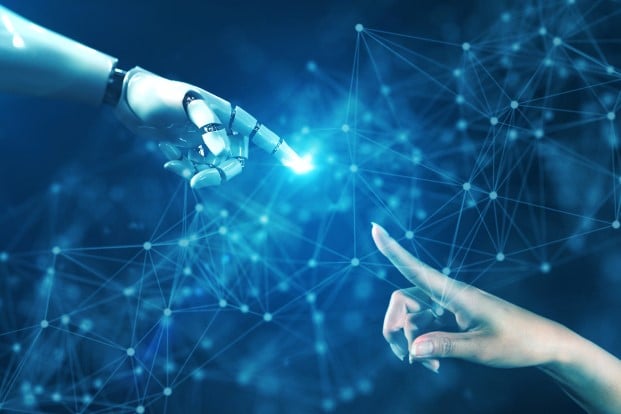For Best Results, AI Must Be Augmented by Human Element

Artificial intelligence (AI) is enabling powerful transformations in procurement. But to see the best results and unlock its full potential, it needs to be augmented by human intelligence (HI). This is especially important as the procurement function continues to rapidly evolve beyond being viewed solely as a cost controller — and with leading procurement teams redefining themselves as top creators of value across the enterprise.
Today’s procurement department doesn’t just help the business operate on budget and ensure a consistent supply of essential goods. It helps drive sustainability through its product and supplier choices. It enables innovation by fostering deep collaborative relationships with suppliers. And its constant monitoring of external markets has even turned it into a powerful source of risk insight, enabling proactive mitigation of emerging threats across the supply chain.
Behind that shift sit two powerful drivers. The first: Recent crisis events like the coronavirus pandemic have enabled procurement to step up and show the business what it’s capable of today. Through informed choices and fast actions, leading procurement teams have helped mitigate the risks presented by the pandemic, ensuring consistent supply of goods through evolving supplier portfolios.
Unsurprisingly, after seeing that potential in action, senior decision-makers want more. Their expectations have shifted, leading the function to do far more strategic, value-adding work — permanently extending its scope and jurisdiction beyond the boundaries of cost saving.
The second driver — the evolution of AI and the technology used to generate and deliver procurement insights and intelligence — is augmenting and accelerating the capabilities of procurement teams.
Accelerating Intelligence
The use of AI allows procurement professionals more time to focus their efforts on where they can create the most value. By processing and extracting insights from huge data volumes in real time, AI broadly eliminates the need to manually sift through disparate information sources — significantly cutting the time it takes to go from raw data to actionable insight.
With the right AI capabilities, experts can focus on evaluating and contextualizing the insights delivered by AI and acting on them. They can determine which insights are relevant for the business or worth a deeper dive. That’s where AI and digital capabilities start to shine in procurement — when they’re intertwined with HI to create something greater than the sum of its parts.
AI handles the heavy lifting of processing data and dropping predictive insights into experts’ hands. Then, HI — the experts themselves — contextualizes and acts on those insights in ways that technology alone can’t. For procurement teams, combining AI and HI can enable faster delivery of contextualized insights and new opportunities to create value.
Balancing AI and HI
While blending AI and HI can be relatively straightforward, a few pitfalls can occur, hindering procurement leaders as they take steps to empower and elevate the function. This includes the fact that there is no single right balance of AI and HI.
Therefore, instead of relying on prescriptive best practices, leaders must work to understand the level and depth of insight demanded by their teams. Do they need real-time insight delivery — or is near real time OK? How much data must be processed to gain the insights they need? What is limiting their ability to deliver value in new ways?
That understanding and mapping of needs is vital to getting the most from the AI-HI combination — and the technology you invest in must align with those needs. Instead of buying a costly software suite and forcing your team to adapt how it works around it, make decisions and deployments that truly augment and accelerate how team members work, so they can deliver more value without process upheaval.
If a procurement team is small and manages low-volatility categories, for example, the use of highly sophisticated advanced AI capabilities isn’t likely to help it excel — and could negatively impact workflows.
A Combination Case Study
Let’s take a closer look at how the balanced AI-plus-HI philosophy can add value. In 2020, a client, a multinational pharmaceutical giant, gained vital insights into its supplier base and build a stronger view of supply risk, thus helping it navigate disruption caused by the pandemic.
The company previously had sourced risk assessments directly from two data providers, which had created an inconsistent view of risk across its suppliers and categories and made it difficult to assess aggregate risk. Through a balanced approach of AI and HI, thousands of suppliers were mapped, automated monitoring of risk events for 4,000 suppliers was set up, and an intuitive dashboard was created to deliver insights directly to category managers.
These solutions aren’t pure AI but, they offered the right level of automation and augmentation to enable the company’s procurement team to master risk and make proactive decisions during a time of immense global disruption.
AI is undoubtedly transforming how procurement teams manage categories, choose suppliers and manage day-to-day operations. But, to get the best results, AI needs to support and augment the work done and expertise offered by humans. The contextual understanding that humans bring to the table remains unsurpassed, so the key to success is finding the best, most effective ways of deploying AI and HI alongside one another.
By striking that balance effectively, the benefits can extend far beyond your procurement team. What begins as accelerated procurement intelligence can quickly ripple outward, protecting the business against risk, creating new opportunities for innovation and product development, and informing strategic decisions at the highest level.



